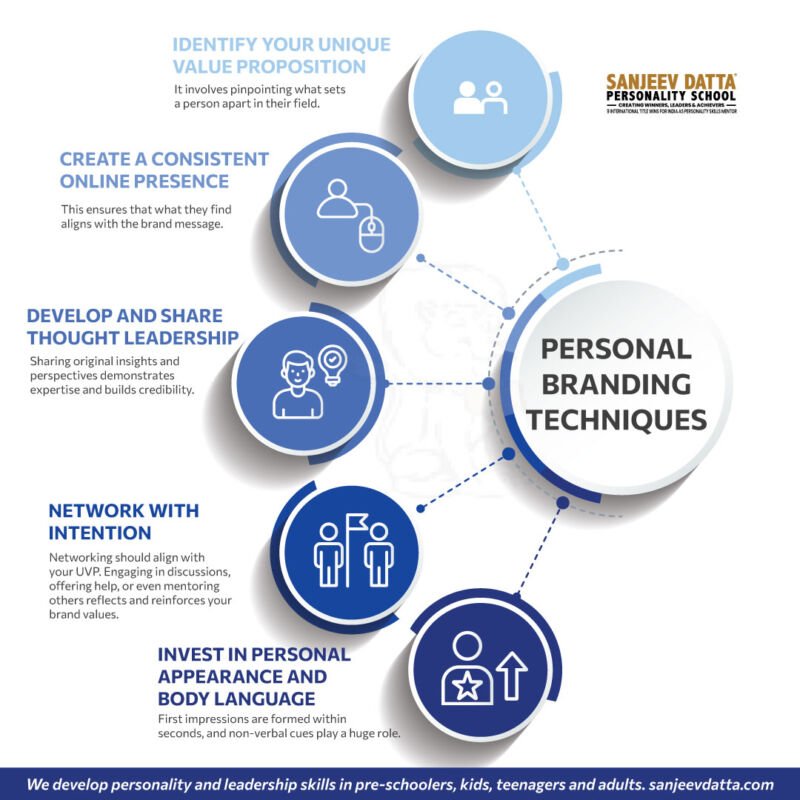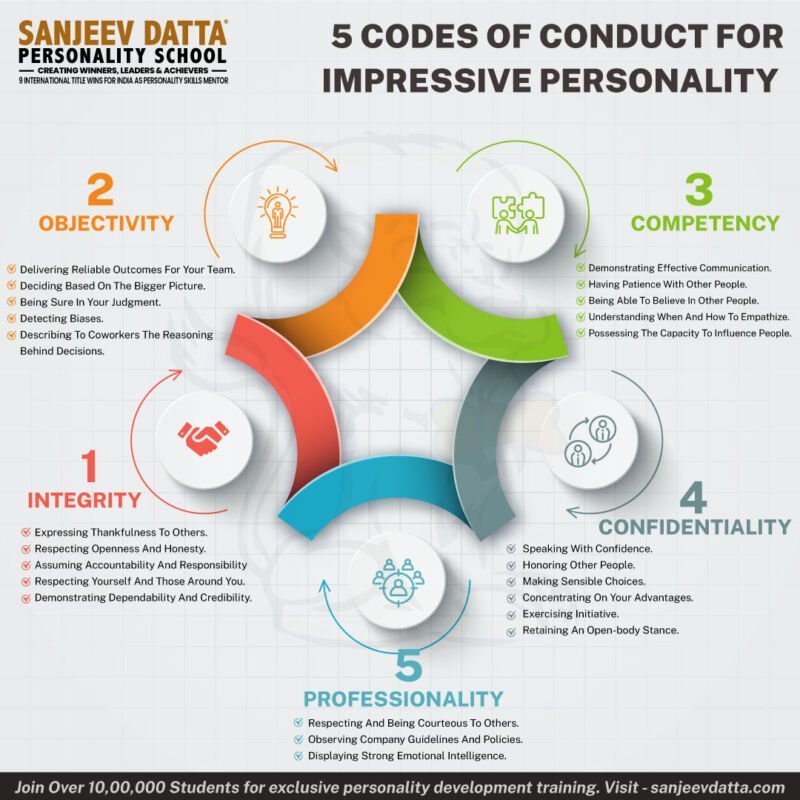You’re staring at your computer screen on a Monday morning, feeling that familiar knot in your stomach as you contemplate another day in a career that no longer fulfills you. At 38, you thought you’d have it all figured out by now, but instead, you’re questioning everything about your professional path. Here’s the truth: it’s never too late to reinvent yourself, and personality development for career change isn’t just possible after 40—it’s often when people make their most successful transformations. The wisdom, experience, and self-awareness you’ve gained over the years are actually your superpowers in this journey, not obstacles to overcome.
Why Career Change After 35 Requires Intentional Personality Development?
Making a career change in your late thirties or forties isn’t like switching jobs in your twenties. You’re not just changing what you do—you’re fundamentally reshaping who you are professionally. This transformation requires more than updating your resume or learning new technical skills; it demands a complete reimagining of your professional identity.
Personality development becomes crucial because employers, colleagues, and even you yourself have built certain expectations based on your established career trajectory. Breaking free from these preconceptions requires conscious effort to develop new facets of your personality while leveraging the strengths you’ve already built.
The good news? Adults have what psychologists call “personality plasticity”—the ability to consciously reshape traits and behaviors throughout their lives. Research from the University of Illinois shows that people can successfully modify their personalities with sustained effort, particularly when motivated by significant life changes like career transitions.

The Unique Challenges of Mid-Career Transformation
Unlike younger professionals who are still exploring their identities, career changers over 35 face specific psychological hurdles. You might struggle with impostor syndrome, worry about starting over, or feel overwhelmed by the gap between where you are and where you want to be.
These challenges aren’t weaknesses—they’re normal responses to major life transitions. The key is developing personality traits that help you navigate uncertainty, embrace learning, and project confidence even when you’re stepping into unfamiliar territory.
Your established patterns of thinking, communicating, and problem-solving served you well in your previous career, but they might need adjustment for your new path. This is where strategic personality development becomes your competitive advantage.
Essential Personality Traits for Successful Career Transition
1. Developing Growth Mindset and Adaptability
The foundation of successful career change is cultivating what Stanford psychologist Carol Dweck calls a “growth mindset”—the belief that abilities and intelligence can be developed through dedication and hard work.
For career changers over 35, this means consciously shifting from “I am what I am” thinking to “I am what I’m becoming.” This mindset shift affects everything from how you approach learning new skills to how you present yourself in job interviews.
Practical ways to develop growth mindset:
- Reframe challenges as opportunities rather than threats
- View setbacks as learning experiences, not personal failures
- Celebrate small progress and incremental improvements
- Seek feedback actively and respond to it constructively
- Replace “I don’t know how to do this” with “I don’t know how to do this yet”
Adaptability goes hand-in-hand with growth mindset. In today’s rapidly changing job market, the ability to pivot, learn quickly, and adjust your approach is more valuable than specialized expertise alone.
2. Building Confidence and Self-Advocacy Skills
Many career changers struggle with confidence, especially when competing with younger candidates or entering fields where they lack direct experience. Personality development for career must include building unshakeable self-confidence based on your unique value proposition.
Confidence-building strategies:
- Conduct a thorough inventory of your transferable skills
- Document your achievements and their impact in quantifiable terms
- Practice articulating your value in different contexts
- Seek out situations where you can demonstrate competence
- Build a support network of people who believe in your potential
Self-advocacy becomes particularly important when you’re explaining your career change to skeptical employers or networking contacts. You need to become comfortable promoting yourself and your capabilities without apologizing for your non-traditional path.
Key components of personal excellence
3. Cultivating Emotional Intelligence and Communication Skills
Emotional intelligence (EI) often matters more than technical skills in career transitions. Your ability to understand and manage your own emotions, read others effectively, and navigate workplace relationships can make or break your career change success.
Key emotional intelligence components for career changers:
- Self-awareness: Understanding your motivations, triggers, and emotional patterns
- Self-regulation: Managing stress, anxiety, and frustration during the transition
- Empathy: Connecting with others and understanding their perspectives
- Social skills: Building relationships and influencing others positively
Communication skills deserve special attention because you’ll need to tell your career change story compellingly across various contexts—networking events, job interviews, and casual professional conversations.
Practical Strategies for Personality Transformation
1. The 90-Day Personality Development Plan
Sustainable personality change doesn’t happen overnight, but you can see significant progress in 90 days with focused effort. This timeline is realistic for busy professionals while being short enough to maintain momentum.
Week 1-2: Assessment and Goal Setting
- Complete personality assessments (Myers-Briggs, DISC, Big Five)
- Identify specific traits you want to develop or modify
- Set measurable goals for personality changes
- Create accountability systems and tracking methods
Week 3-6: Foundation Building
- Begin daily practices that reinforce desired traits
- Start networking and relationship-building activities
- Practice new behaviors in low-stakes situations
- Seek feedback from trusted advisors or mentors
Week 7-12: Integration and Application
- Apply new personality traits in professional settings
- Refine your approach based on results and feedback
- Build consistency in new behaviors and thinking patterns
- Prepare for job search or career transition activities

Leveraging Personality Development Classes and Professional Resources
While self-directed change is powerful, structured learning can accelerate your transformation. Personality development classes designed for professionals provide frameworks, feedback, and accountability that speed up the process.
Types of valuable professional development classes:
- Leadership development programs
- Executive presence and communication workshops
- Emotional intelligence training
- Networking and relationship-building seminars
- Industry-specific professional development courses
Choose programs that offer practical application opportunities, not just theoretical knowledge. The best personality development classes include role-playing, peer feedback, and real-world assignments that let you practice new behaviors in supportive environments.

- Building Your Professional Brand Around Your New Personality
Your professional brand should reflect your evolving personality while maintaining authenticity. This means updating not just your resume and LinkedIn profile, but also how you show up in professional interactions.
Brand alignment strategies:
- Update your professional photos to reflect your new confidence
- Revise your elevator pitch to emphasize your transformed mindset
- Share content that demonstrates your evolved thinking and expertise
- Seek speaking or writing opportunities in your target field
- Join professional organizations where you can practice new behaviors
Overcoming Age-Related Concerns and Biases
1. Addressing Ageism in Career Change
Let’s acknowledge the elephant in the room: ageism exists, and career changers over 35 sometimes face discrimination. However, personality development for career change can help you overcome these challenges by emphasizing your unique strengths and demonstrating vitality and adaptability.
Strategies for combating ageism:
- Emphasize your energy and enthusiasm for new challenges
- Demonstrate technological savvy and modern thinking
- Highlight your stability and reduced job-hopping likelihood
- Focus on results and value rather than years of experience
- Build relationships across generations and learn from younger colleagues
The key is never apologizing for your age or experience level. Instead, position these as assets that bring wisdom, perspective, and reliability to your new field.
2. Competing with Younger Candidates
When you’re competing with candidates who are 10-15 years younger, you need to highlight what you bring that they can’t: judgment, emotional maturity, extensive network, and deep problem-solving experience.
Competitive advantages of mature career changers:
- Better emotional regulation under pressure
- Stronger communication and interpersonal skills
- More sophisticated understanding of business dynamics
- Established professional networks and relationships
- Proven ability to handle responsibility and complexity
Frame your experience as an investment in your future employer’s success, not a liability that needs explanation.
Are intelligent people risk averse
3. Managing Family and Financial Responsibilities During Transition
Career change after 35 often comes with significant financial and family responsibilities that younger people don’t face. Personality development must include developing traits that help you manage these pressures while pursuing your goals.
Essential traits for managing transition responsibilities:
- Strategic thinking: Planning your transition to minimize financial risk
- Patience: Understanding that career change may take longer than expected
- Communication: Keeping family members informed and engaged in your journey
- Resourcefulness: Finding creative solutions to overcome obstacles
- Resilience: Bouncing back from setbacks without losing momentum
Consider developing a transition timeline that balances your desire for change with your need for stability. This might mean making gradual changes, building new personality development skills while employed, or taking calculated risks at strategic moments.

Developing Personality Development Skills for Long-Term Success
1. Continuous Learning and Skill Acquisition
The modern job market rewards continuous learners, and developing a learning mindset becomes part of your personality transformation. This goes beyond acquiring technical skills—it’s about becoming someone who thrives on growth and change.
Building a learning-oriented personality:
- Set aside dedicated time for skill development daily
- Join professional associations and attend industry events
- Seek mentors in your target field who can guide your development
- Take on challenging projects that stretch your capabilities
- Share your learning journey with others through teaching or mentoring
The goal is becoming known as someone who embraces change and continuously improves, rather than someone who’s stuck in old ways of thinking.
2. Leadership and Influence Skills
Even if you’re not seeking formal leadership roles, developing leadership traits enhances your career change prospects. Employers value people who can influence others, drive initiatives, and take ownership of results.
Leadership traits to develop:
- Vision: Ability to see possibilities and communicate them compelling
- Initiative: Taking action without waiting for permission or direction
- Collaboration: Building coalitions and working effectively with diverse teams
- Decision-making: Making sound choices under uncertainty and pressure
- Accountability: Taking responsibility for outcomes, both positive and negative
Practice these traits in volunteer roles, community organizations, or informal leadership opportunities within your current job.
3. Networking and Relationship Building
Your ability to build and maintain professional relationships becomes crucial during career transitions. This isn’t just about collecting business cards—it’s about developing genuine connections that provide mutual value.
Relationship-building personality traits:
- Curiosity: Genuine interest in other people’s experiences and perspectives
- Generosity: Willingness to help others without expecting immediate returns
- Authenticity: Being genuine in your interactions and communications
- Follow-through: Consistently doing what you say you’ll do
- Active listening: Focusing fully on others rather than waiting to speak
Build relationships before you need them. The strongest professional networks are built on mutual respect and shared value, not transactional exchanges.
FAQ
Q: Is it really possible to change your personality after 40?
A: Yes! Research shows that personality traits can be modified at any age with sustained effort and practice. While core aspects of personality remain relatively stable, you can develop new behaviors, thought patterns, and ways of interacting that support your career goals.
Q: How long does it take to see results from personality development efforts?
A: You may notice small changes within weeks, but significant personality shifts typically take 3-6 months of consistent effort. Some changes become apparent to others before you notice them yourself, so seek regular feedback from trusted sources.
Q: What if my family or friends don’t support my career change?
A: It’s common for loved ones to feel uncertain about major changes. Focus on communicating your motivations clearly, demonstrating your commitment through actions, and building external support systems while working to bring family members along gradually.
Q: Should I completely reinvent myself or build on existing strengths?
A: The most successful approach combines leveraging existing strengths while developing new capabilities. Don’t abandon what’s worked for you—instead, expand your range and adapt your strengths to new contexts.
Q: How do I know which personality traits to focus on developing?
A: Start with the requirements of your target role and industry. Research successful people in your desired field, conduct informational interviews, and analyze job descriptions to identify the most valued traits. Focus on 2-3 key areas rather than trying to change everything at once.
ways to practice mindful communication
Conclusion: Your Professional Reinvention Starts Now
Personality development for career change after 35 isn’t just about landing a new job—it’s about becoming the person who thrives in your ideal career. The wisdom, experience, and self-knowledge you’ve gained over the years are powerful assets in this transformation, not limitations to overcome.
The process requires patience, persistence, and faith in your ability to grow and change. There will be moments of doubt, setbacks that test your resolve, and times when the gap between where you are and where you want to be feels overwhelming. These challenges are normal parts of the journey, not signs that you should give up.
Your action plan for professional personality transformation:
- Complete honest assessment of your current personality and desired changes
- Choose 2-3 key traits to focus on developing over the next 90 days
- Create daily habits and practices that reinforce your desired personality changes
- Build a support system of mentors, coaches, and peers who can guide and encourage you
- Set realistic milestones and celebrate progress along the way
Remember that career change after 35 often leads to the most fulfilling and successful phases of people’s professional lives. You’re not starting over—you’re building on decades of experience, relationships, and hard-won wisdom. Your age and experience are advantages, not obstacles.
The job market needs mature professionals who bring stability, judgment, and deep expertise to new challenges. By combining your existing strengths with consciously developed new traits, you become an incredibly valuable professional who stands out from both younger candidates and peers stuck in outdated career patterns.
Your career change journey begins with a single decision: choosing to believe that growth and transformation are possible at any age. The personality traits you develop during this transition will serve you not just in your new career, but in every aspect of your life moving forward.
Start today with one small action—update your LinkedIn profile, reach out to someone in your target industry, or sign up for a relevant online course. Personality development for career change happens one day, one decision, and one new behavior at a time. Your future self is waiting for you to take the first step.


